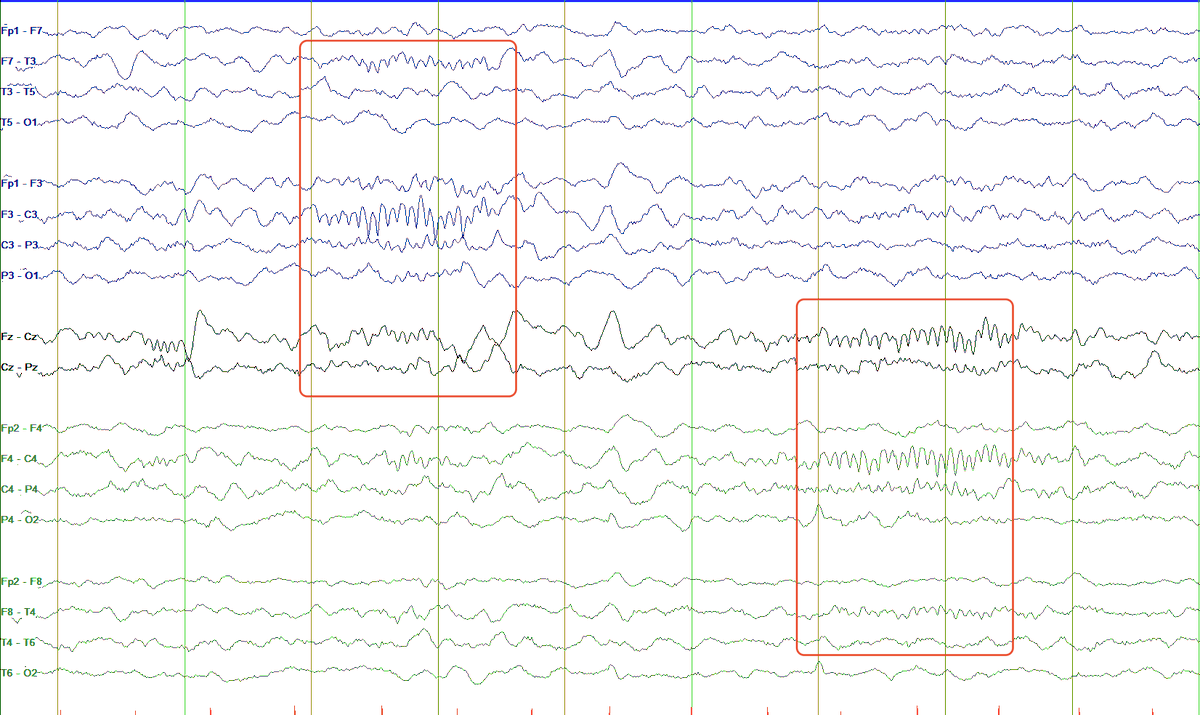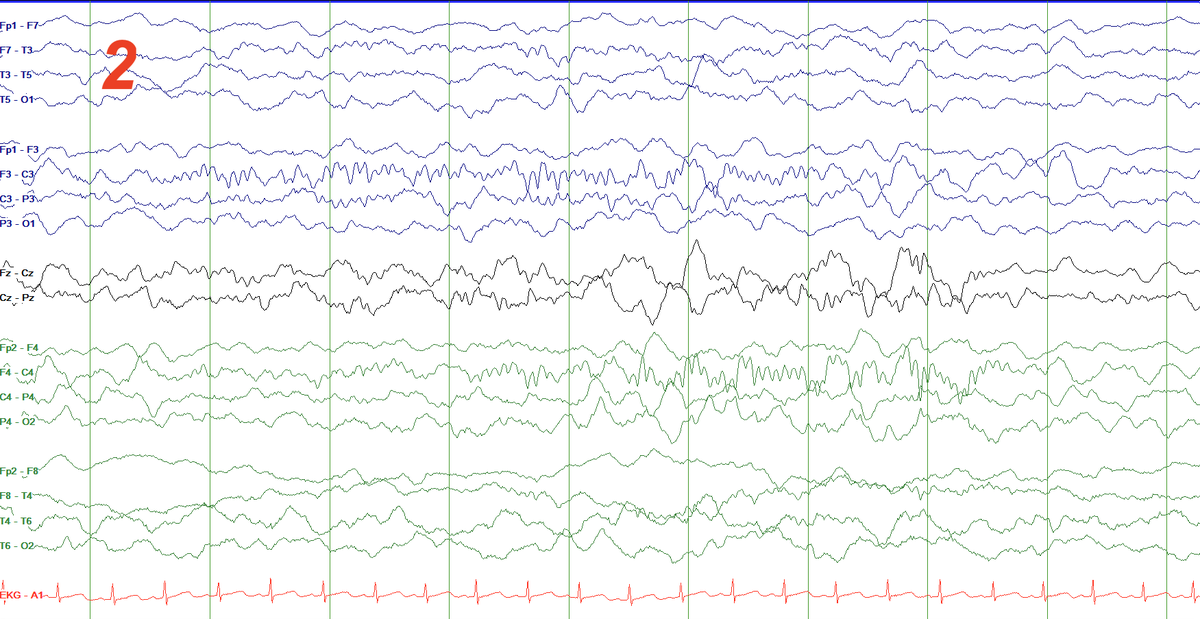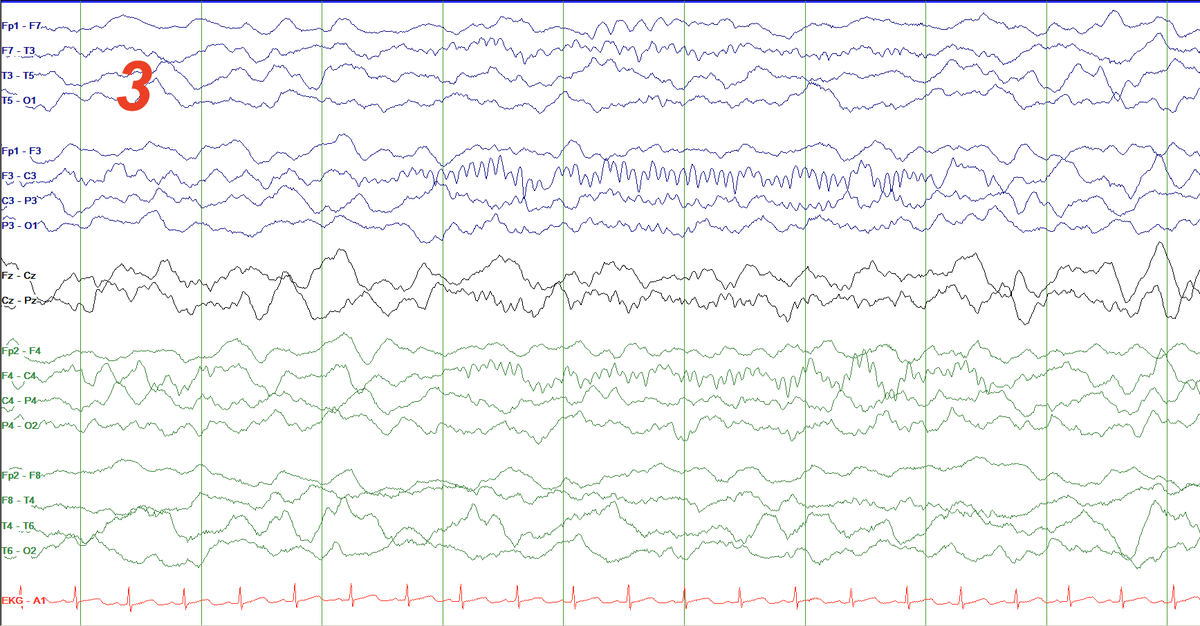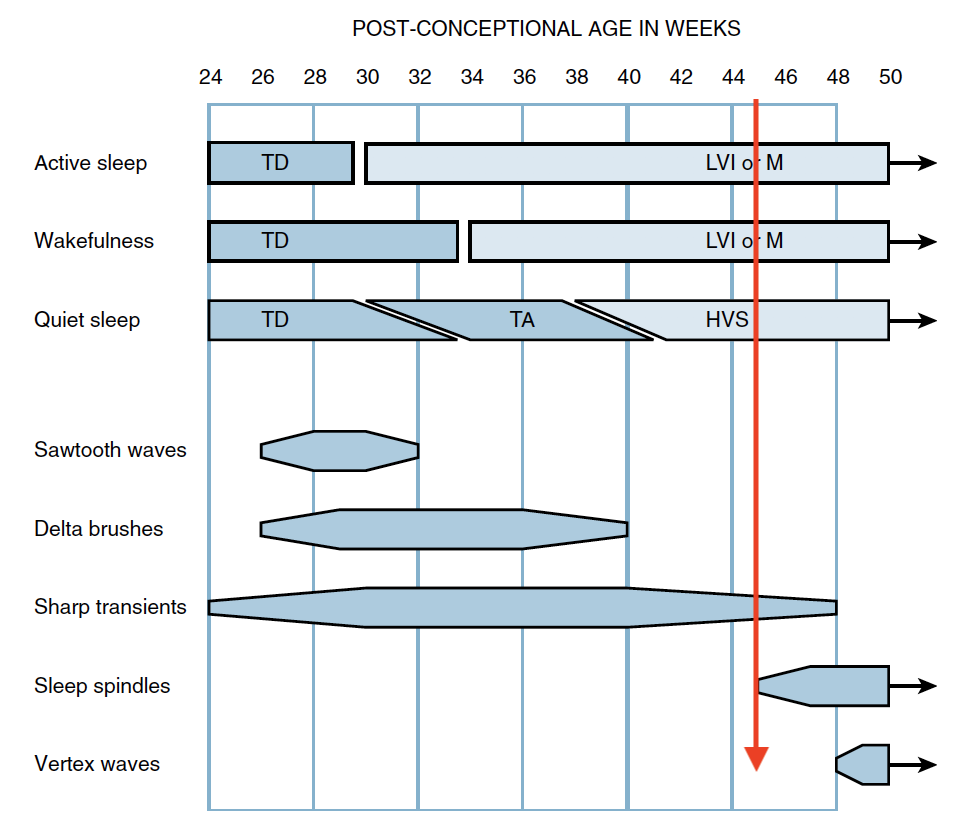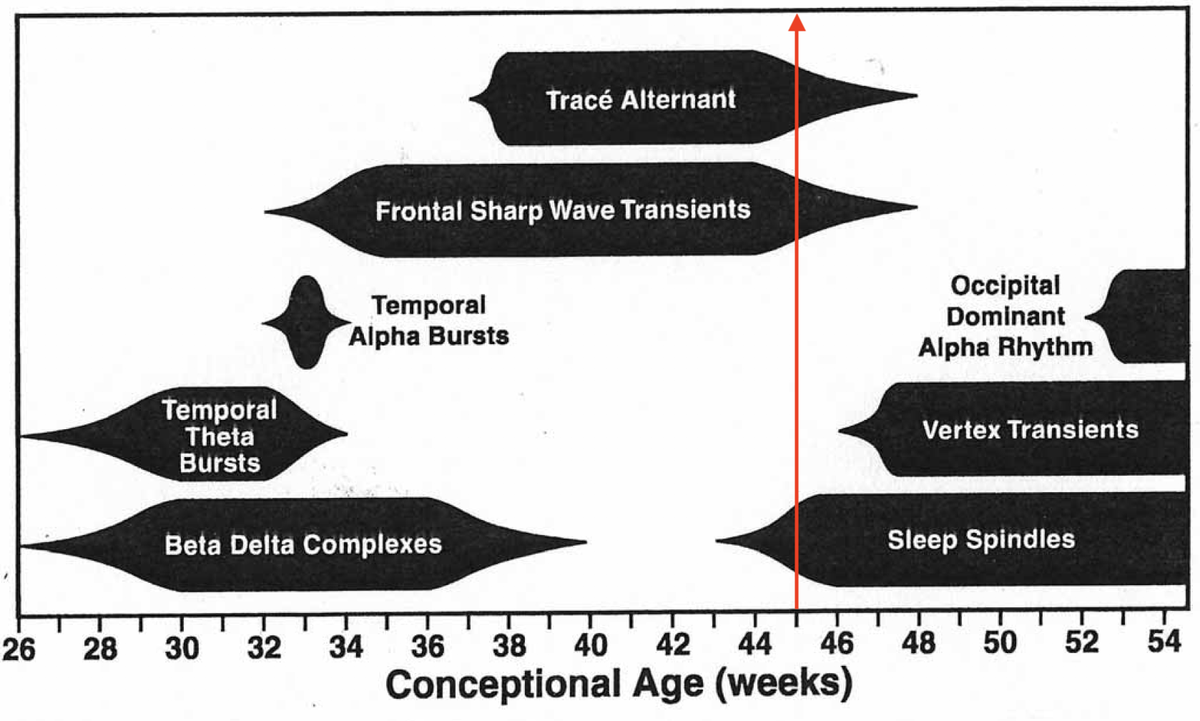If I will report this as "normal," what is the OLDEST this patient can be? Vote in the next tweet 👇! #Tweetorial to follow #MedEd #neurology #MedTwitter #FOAMed
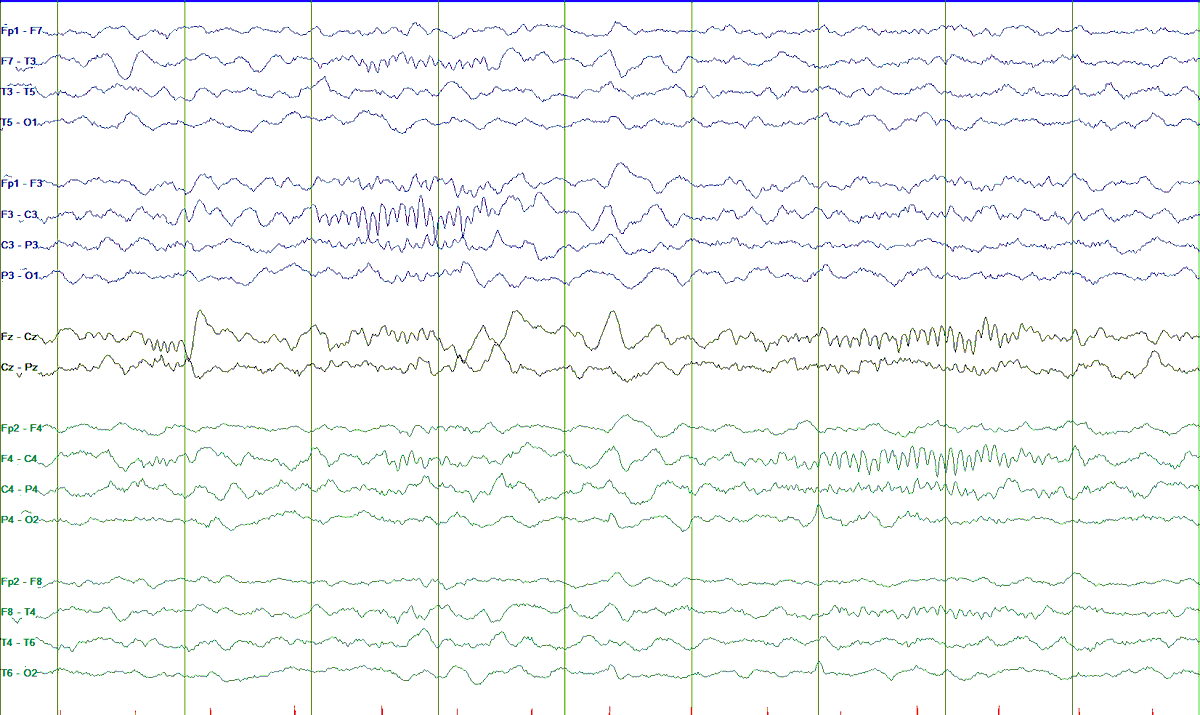
For this study to be normal, the patient must be UP TO:
Based on the finding above, What is the YOUNGEST this patient must be? CA = postconceptional age
1. SS appear, as defined by its name, during sleep (more on this later) – ✅ our patient is asleep, as evidenced by lack of myogenic artifact and slow background
3. SS are regular 12-14 Hz waves – ✅Want to count the example I gave you? (Spoiler- it’s 13 Hz)
➡️ ASYNCHRONY: findings occur in each hemisphere at different times, but their frequency "evens out" throughout the study
➡️ ASYMMETRY: one side shows persistent differences in amplitude, rate (as in per-second) or frequency (as in how many times a finding occurs throughout the recording).
[BTW- this applies to any EEG element, not just SS]
While most kids seem to show SS symmetry after 12 months, most authors see asynchronous SS as normal within 1st 2 years of life
1. Become more synchronous (full synch by age 24 mo)
2. Get shorter (typically 3-4 sec but up to 10 in babies vs. 1-2 sec but up to 4 in adults)
3. Go from arciform in infants to sinusoidal shape
4. Can start frontally max in infants, then move centrally max
You see why I said this is one of my fave EEG findings, who's with me?! 🤓

